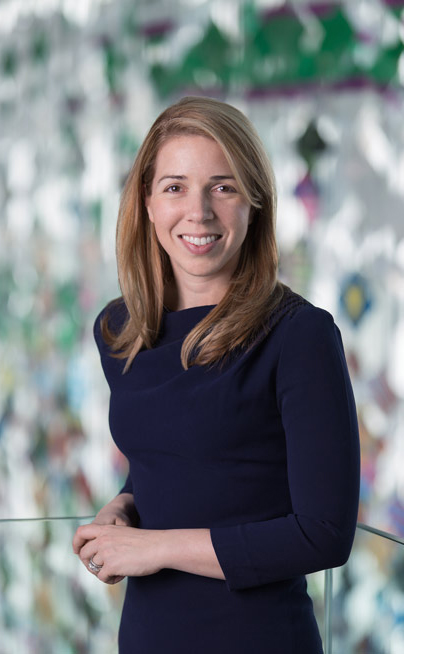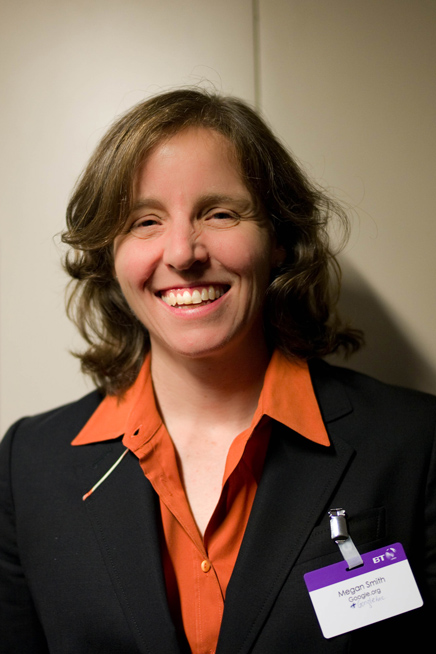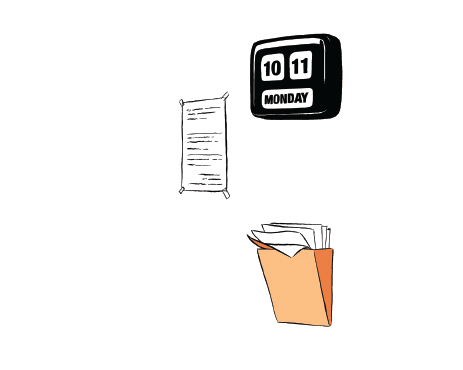




Let’s be honest: The federal government isn’t exactly known for its five-star customer experience. Whether applying for student loans or Social Security benefits, paying taxes or seeking health care information, Americans have a multitude of complaints about the difficulty of interacting with federal agencies. Even President Obama took notice and directed agencies in April 2011 to improve the way they serve citizens.
The push to plug the weak spots in federal customer experience gained momentum in 2014 with the launch of two new organizations—18F, a General Services Administration office created to help agencies improve online operations, and the U.S. Digital Service, a White House office that aims to untangle gnarly technology projects and make them successful. Illustrating the importance of customer experience—or CX in techspeak—USDS highlighted the issue in its Digital Services Playbook.
Despite these efforts, federal CX has been a bit of a bust.
A November 2014 study by Forrester Research went as far as calling federal customer service “disastrously weak.” The CX Index, which measures how customers perceive their interactions with organizations in terms of the ease, effectiveness and emotion of an experience, found that agencies earned an average ranking of “very poor.” Even more troubling for the government is that even the highest-rated agency still scored lower than the worst private sector organization Forrester examined. “Compared with dozens of auto, banking, retail and e-tail companies we also ranked, federal CX looks downright bleak,” wrote the report’s author, Rick Parrish.
A similar assessment came from the American Customer Satisfaction Index, which found that satisfaction with the federal government has plummeted to an all-time low—a dip linked to decreased customer service, likely the result of budget cuts and sequestration.
“Among more than 40 industries covered by the ACSI, only Internet service providers have a lower score,” the report said of agency rankings.
The overarching reason for slow progress is news to no one: The government is a large bureaucracy mired in complex regulations, often not entirely of its own making. Its procurement cycles are lengthy, and efforts to adopt newer, more efficient technologies and processes often become ensnared in red tape.
But don’t blame heartless bureaucrats for the government’s customer service shortcomings.
“I want to dispel that myth; it’s not culture—government employees really care about their customers,” says Phaedra Chrousos, chief customer officer at GSA and associate administrator for the Office of Citizen Services and Innovative Technologies and 18F.
There are four federal agencies with chief customer officers, and that’s a pocket of hope.Rick Parrish, Senior Analyst, Forrester Research

What’s happening, she says, is that unlike the commercial world, the underlying technologies and processes in government change at a crawling speed. Chrousos compares the government to a slow-moving cruise ship you’re trying to steer in the right direction, whereas the private sector is more like a sleek sailboat that catches the fast winds of customer sentiments and moves accordingly.
A former industry executive and entrepreneur, Chrousos says a citizen’s customer experience with the federal government includes many different transactions and may touch different agencies: say, the Internal Revenue Service for tax dealings, the Education Department for student loans, and the Social Security Administration for benefits.
To create a better customer experience, all these transactions need to be improved and rolled into one platform, Chrousos says.
“It’s very important to keep in mind that the average citizen doesn’t see us as the Department of Education or GSA or USDS. They see us as the U.S. government,” she says.
Agencies need to think about the sum total or bundling of such transactions, a sort of “lifetime consistency experience,” says Tom Romeo, president of MAXIMUS Federal.
“If I’m a family that has children with student loans and need access to Social Security or need Medicare, maybe those should have some commonalities in how my citizen experience flows,” he says. “But connecting services like that across the government is very, very difficult.”
Yet, efforts to do just that are burgeoning across government. As one example, Chrousos cites MyUSA. A product of the inaugural Presidential Innovation Fellows class, the online portal aims to make it easier for citizens to find information and services across the federal government. An entrepreneur, for example, can use MyUSA to locate the right forms needed for tax reporting or business operations.
For the past seven months, Chrousos’ team has been piloting ideas to transform the relationship between GSA and its customers the way chief customer officers do in the private sector. The first task was to encourage GSA employees to make data-driven decisions centered around the customer on a daily basis.

I want to dispel that myth; it's not culture—government employees really care about their customers.Phaedra Chrousos, Chief Customer Officer, GSA
Basically, it’s boiled down to having a deeper understanding of the customer, “and that has been totally transformational for the agency,” Chrousos says. This approach is not just about customer service, but also “are our products and services meeting the needs of our customers?” and “are we relevant?” she says. The team has worked closely with the Veterans Affairs Department, the Peace Corps, the State Department, USDS and the Office of Personnel Management. But the idea is to think even bigger.
“The question now is, how do we template this [pilot] and make it scalable?” Chrousos says.
Initiatives like these are what Parrish, the Forrester researcher, calls “pockets of hope.” Throughout government, there are those “who are aware of what needs to be done and desperately want to do what needs to be done,” he says.
“And then there are some pockets of hope,” he adds. “U.S. Digital Service is a pocket of hope; 18F is a pocket of hope. There are four federal agencies with chief customer officers, and that’s a pocket of hope.”

In late January, the nation’s newly named top technologist mused that it should be as easy to access government services as it is to make an online purchase or interact on social media.
We’re the country that created Facebook and Twitter and created the Internet,” federal Chief Technology Officer Megan Smith said, speaking at the Jan. 27 State of the Net conference in Washington. “Why shouldn’t the websites and the mobile services and the way that we do customer service with the American people from the government—why shouldn’t it be that good?
Well, yes, why not?
Chrousos, like Smith, posits that dealing with the government could absolutely be as easy as ordering something off Amazon.
“That’s a bare minimum,” Chrousos adds. “I hope we can keep up and don’t just do the Amazon of today, but the Amazon of the future.”
But Parrish says expecting citizens to have an Amazon-like experience when interacting with the federal government may be too ambitious of a goal.
“E-tail experiences are often simple and transactional, and not much we do with government is that simply transactional,” he says. “Even with something like getting a passport, for instance, there are certain legal requirements and you often have to go into the office.”
Parrish is hopeful, however, that 2015 will be the year the needle moves forward on federal CX. Just don’t expect any radical changes, he says.
“Federal agencies aren’t doing anything revolutionary, but they’re doing stuff, so I think 2015 will be the year of improvement,” Parrish says. “But it’s the kind of improvement we saw happening in the private sector at least three to five years ago. It’s new for many federal agencies, but it’s not revolutionary in any way.”
Todd Akers, public sector vice president at the tech services company Acquia, agrees. Federal CX may see some advances this year, but agencies aren’t exactly taking leaps and bounds toward innovation. For now, the trend is toward mobile devices: non-HTML based platforms, mobile devices and responsive design, he says.
We're the country that created Facebook and Twitter and created the Internet . . .Megan Smith, Federal Chief Technology Officer
why shouldn't it be that good?

“Mobile is the way of the future—and we’ve known that for the past few years,” he says.
Akers, whose company provides products, services and technical support for Drupal, says agencies feel siloed and unable “to think outside the box as much as they want,” making innovation a challenge.
“They may be thinking they might be constricted by technical capabilities, but the reality is there are things that can get done when you have an innovative platform,” he adds.
Technology is no panacea for fixing federal CX, but it plays an essential role. According to Chrousos, even when citizens don’t interact with the government online, they may be dealing with call centers that have a significant technology underpinning. “This is a massive technology play, and the only way we can scale customer experience is through technology,” she says.
For her team, data in particular has been key to understanding customers. Google Analytics for Government is now mandatory for all federal websites, and implementing that has deepened GSA’s understanding of users. The Office of Citizen Services and Innovative Technology is also developing an offline feedback mechanism called the Federal Feedback Button to gather comments from customers, she says.
But creating a really great customer experience extends beyond technology.
Last year, as Parrish was driving home early from the airport, a Fairfax, Virginia, police officer pulled him over. The officer noted that Parrish’s brake light was out and the back of his car had some damage.
“Right away, everything else was set aside: ‘Are you OK, sir? Have you been in an accident? Even a low-speed accident can hurt your neck or your back.’” Parrish recalls the officer asking with concern.
The officer asked whether Parrish wanted to file a report about the damage to his car, something he suggested may have happened while parked at the airport. Finally, the officer suggested finding a phone number for the airport to see if the security cameras had caught anything.
In the end, Parrish ended up getting a ticket for various violations.
The officer said “the bad news is, I’ve got to give you a ticket for this other stuff,” Parrish recalls. “But at that point, I was like, ‘Yes! Absolutely!’ Sure, I had to pay $348, but I was happy about it and did it without complaint because it was a good experience. That’s what the IRS could be.”
The IRS has long held the dubious honor as the most hated—and feared—federal agency. Among all federal agencies, the Treasury Department as a whole in January received the lowest ACSI score, which measures how satisfied citizens are with federal services.

There’s no law of nature that says it can’t be done; it’s just going to take sustained work and attention at the highest level.Rick Parrish, Senior Analyst, Forrester Research
And 2014 wasn’t an anomaly by any means. In May 2013, a mere 27 percent of some 1,000 U.S. adults polled by Gallup said the IRS did an excellent or good job. The following year, Gallup pollsters noted the IRS approval ratings had increased by 14 percentage points—still a dismal number, considering the 59 percent who didn’t hold the agency in high regard.
To turn around that perception, the IRS needs to change what feelings it evokes in people.
Parrish suggests the IRS first pinpoint how its customers want to feel after an interaction. Let’s say it determines citizens want to feel respected, confident and that the agency has their best interests at heart. The IRS should then conduct its own research to understand how to create a customer experience that leads to people feeling those emotions.
“It’s not about making a melodramatic experience—like sing an aria about how the IRS is looking out for your best interests,” Parrish says. “It’s about designing customer touch points, whether those are digital like a website or email, or old school person-to-person, face-to-face touch points and processes that incite the right feelings.”
Agencies should, however, not be too quick to look at tech as a silver bullet. “What I worry about is that when we talk about customer experience, it evolves into a technology discussion,” MAXIMUS’ Romeo says. “Technology is just the tool that will enable you to get to the outcomes you need to get to.
Parrish agrees, saying that reach for technology as a fix-all is very common. Typically, when faced with a problem, he says, agencies tend to immediately turn to procurement as a solution: What widget in a box can I buy that can fix this?
“Better federal CX cannot be purchased in a box; it’s not primarily a technological problem,” Parrish explains. “This is a cultural problem; it’s about governance structure and policies and procedures and partnerships with the private sector. Technology improvements are necessary, but not sufficient—not by far.”
Ultimately, the push to fix federal CX should come from the top if the Obama administration wants to realize those transformational changes it envisioned several years ago. Parrish seems cautiously optimistic that such a change could happen, but it will be a tall order for those involved.
“There’s no law of nature that says it can’t be done; it’s just going to take sustained work and attention at the highest level,” he says.
For 18F’s chief customer officer, getting customer feedback—the good and the bad—will be key in continuing to nudge federal CX forward.
“I hope they complain not to their friends but to us,” Chrousos says. “I want them to know we’re listening and that we’re collecting their data and that we really care. We’re working as a U.S. government as a whole to get every agency toward the right direction. Keep complaining—but complain to us.”

Camille Tuutti is executive editor at Nextgov. She previously served as editorial director at FedScoop, and prior to that, she was a staff writer and "People" section editor at FCW. Before that, she served as news editor and wrote about government contracting and IT.